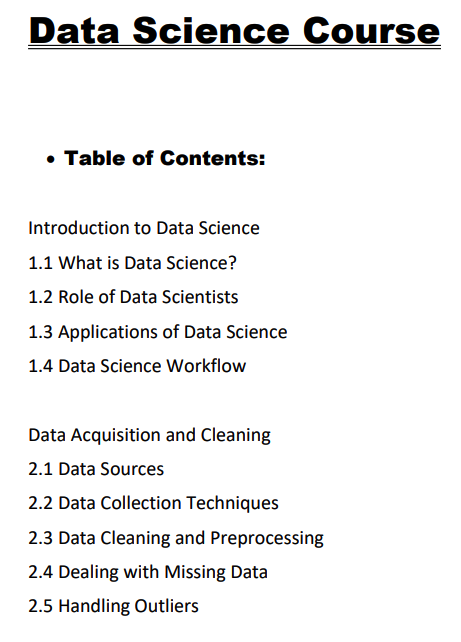Data Science Course for Beginners (Grade A+)
Summary:
This note provides an overview of the topics covered in a Data Science course. It starts with an introduction to Data Science and the role of Data Scientists, followed by discussions on data acquisition and cleaning techniques. Exploratory Data Analysis (EDA) includes descriptive statistics, data visualization, and hypothesis testing. The fundamentals of Machine Learning, Regression Analysis, Classification Algorithms, Clustering Techniques, Natural Language Processing (NLP), Deep Learning, Time Series Analysis, and Big Data Analytics are explored. The note also covers Data Visualization and Communication, Model Deployment and Production, Ethical Considerations in Data Science, case studies, practical applications, and emerging trends in the field.
Excerpt:
Data Science Course for Beginners
Introduction to Data Science
1.1 What is Data Science?
Data Science is an interdisciplinary field that involves extracting insights and knowledge from data through various techniques, including statistical analysis, machine learning, and data visualization. It combines elements of mathematics, statistics, computer science, and domain knowledge to derive meaningful insights from large and complex data sets.
Data Science aims to uncover patterns, trends, and correlations in data to make informed decisions, solve complex problems, and drive business value. It involves collecting, cleaning, and analyzing data to extract valuable insights and communicate them effectively to stakeholders.
1.2 Role of Data Scientists
Data scientists possess a unique blend of technical skills, domain expertise, and analytical
thinking. They play a crucial role in the data science workflow and are responsible for:
Data Collection and Cleaning: Data scientists gather relevant data from various sources and preprocess it to
ensure its quality, consistency, and accuracy. This involves handling missing data, removing outliers, and transforming data into suitable formats.
Exploratory Data Analysis (EDA): They perform exploratory analysis to understand the characteristics and patterns present in the data. EDA helps in identifying trends, outliers, and relationships between variables,
providing insights for further analysis.
Statistical Analysis and Machine Learning: Data scientists apply statistical techniques and machine learning
algorithms to build models that can make predictions, classify data, or uncover hidden patterns. They select the most suitable algorithms and fine-tune them to achieve optimal results.


Reviews